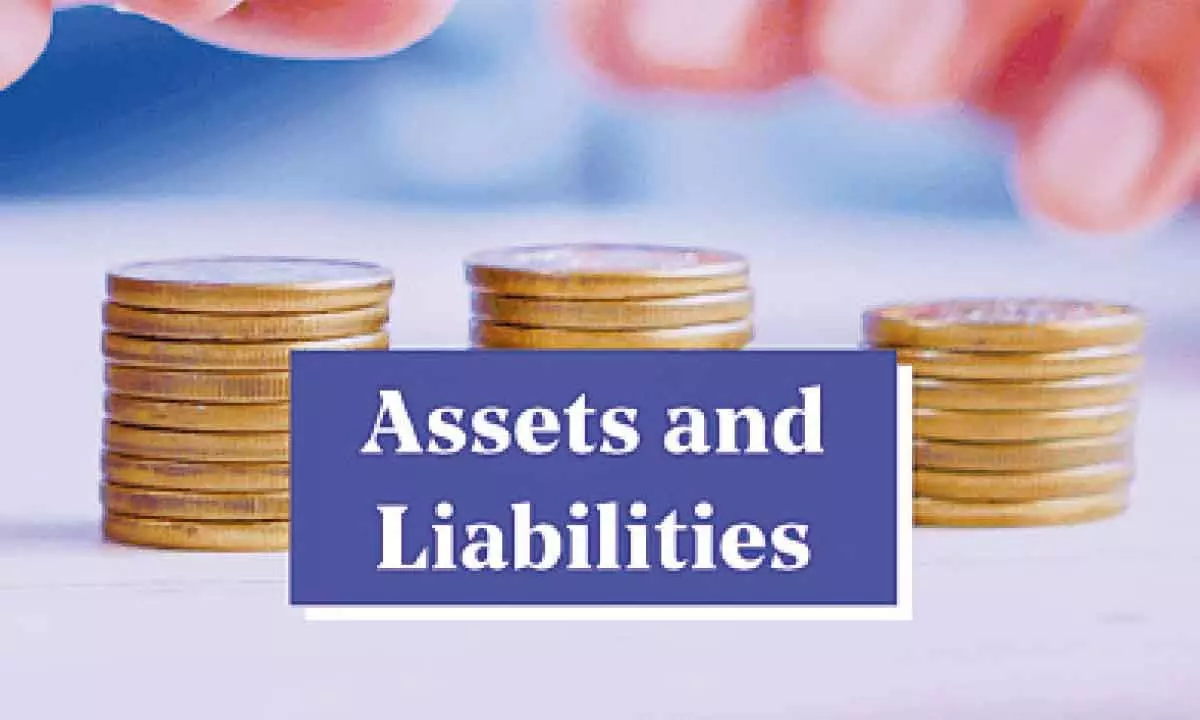Bridging financial savings and liabilities gap should be the country’s priority
There has been an adverse impact on household savings post-Covid as expenditure on health took priority
image for illustrative purpose

The substantial addition to individual debt and increase in financial liabilities are due to an increase in borrowings to bridge the gap or supplement income to meet immediate requirements
A recent report by the Ministry of Statistics finds that savings of Indian households as a percentage to GDP has been declining substantially, whereas the liabilities of individuals has been on the rise resulting in an increase in their debt levels.
According to the report the net financial savings of households plunged to a five-year low of Rs. 14.2 trillion in F 23, a substantial decline from the Rs. 17.1 trillion in F22, primarily due to a sharp rise in short term credit.
Many economists opine that the fall could be attributed to 'a lot more leveraged consumption and spending’. Between FY 12 and FY 22 (excluding the Covid-19 year FY 21) the net financial savings hovered around 7-8%.
The gross financial savings of households stood at Rs. 29.7 trillion in FY23, while financial liabilities stood at Rs. 15.6 trillion. In FY 22, the former was Rs. 26.1 trillion and the latter at Rs. nine trillion.
Meanwhile, household liabilities jumped 73% in FY23, while savings rose only by 14%. Bank advances accounted for 75% of the overall liabilities of households during FY23.
A higher household and public savings apart from investments are required to achieve a higher percentage of GDP. The absence of higher household savings will imply that private investment both on the current account and capital account will suffer and thereby reduce the pace of growth.
After all, public savings provide impetus for growth. India's gross savings rate was measured at 30.2% in March 2023, compared with 30.2% in the previous year. India's investment accounted for 31.9% of its nominal GDP in December 2023, compared to the 34.8% ratio in the previous quarter.
There has been an adverse impact on household savings post-Covid as expenditure on health took priority. The contraction in India's GDP was at 5.8% while small trade and MSMEs faced turbulent times. But for emergency credit provided by banks with the government standing guarantee, losses could have been substantial and the recovery slow-paced.
To counter the Covid-induced growth uncertainty, RBI and the Centre brought in support reforms under Atma Nirbhaya Bharathi Abhiyan program. In fact, the central bank released Rs. 12 lakh crore in liquidity and brought the Repo rate to 4 per cent even though the inflation was quite high. It helped in recovery with a GDP growth of 9.2% in 2021-22. However, individuals were getting a negative rate of return, which shattered hopes of higher savings. This situation continued sometime until RBI increased rep rate by 250 basis points to control inflation subsequently, and transmission of these higher repo rate to deposit rates were gradual. At one time, the bank's deposit growth was lagging behind the credit growth.
Meanwhile, apart from attractive rates of return on government savings products which has seen substantial growth in the recent past, the substantial addition to demat accounts and total investment in mutual funds resulted in attractive rates of return.
Another attraction for the savers was to invest in real estate and gold, which are safety financial assets as they are getting converted into financial physical assets. To certain extent it may be necessary as real estate sector provides growth for all other core sector. However, these financial assets from the individual point of view, particularly real estate, are not liquid assets compared to financial savings in the form of ank deposits or government savings deposits.
The regulator has expressed concern at the substantial growth in unsecured credit, particularly personal segment. The RBI has taken steps by prescribing higher capital risk weights on such unsecured credit, including credit to NBFC, which has moderated growth. The substantial addition to individual debt and increase in financial liabilities are due to an increase in borrowings to bridge the gap or supplement income to meet immediate requirements.
These unsecured credits are mostly for short duration and need to ensure funds are used productively as otherwise there is a risk that these debts may be subject to probability of default or debt stress at the borrower's level. In the absence of any tangible assets and merely on cash flow estimation, lenders will have difficulty in getting repayment in financial distress at the borrower's end.
Other individual debts are towards purchase of house, vehicle and consumer durables. Currently there is a tendency to own vehicles and a house at an early stage of life. And as such debt could be easily serviced meaning that such debt does not become a burden. Individual liabilities are to be looked from this angle and over a period of time, financial savings will also grow along with financial physical assets. The continuing sustainable economic growth with more employment opportunities and growth in individual income by way of higher salaries, higher wages, higher trade, professional, services income are required on a continuous basis. This can lead to higher financial savings over a period of time, which will add strength to the country's economic growth.
Also to be noted is that India's successive GDP growth and quickest recovery from the Covid onslaught has been due to government’s continued capex focus. The growth impetus to the economy in the absence of the required private sector investment, revolved around domestic demand and external demand opportunities. The need for extra manufacturing capacity as well as newer sectors like solar, wind, hydrogen, PLI schemes for 13 specific sectors and large foreign direct investment, imply that Indian private sector will take up large new investments. This will help tap the potential and take the country nearer to the goal of becoming the third largest economy within its projected year.
(The author is former Chairman & Managing Director of Indian Overseas Bank)

